Matlab AutocorrelationIntroductionAutocorrelation is a fundamental concept in signal processing, revealing inherent patterns within a signal by measuring its similarity to a time-shifted version of itself. In MATLAB, autocorrelation plays a pivotal role in various applications, offering insights into signal characteristics and aiding in diverse fields. Understanding AutocorrelationAutocorrelation, in simple terms, involves comparing a signal with its delayed version. This process is instrumental in identifying repeating patterns and extracting valuable information from time-series data.
Autocorrelation FundamentalsAt its core, autocorrelation is a measure of similarity between a signal, and a version of itself shifted in time. Mathematically, the autocorrelation function R(τ) for a continuous signal x(t) is defined as: For discrete signals, the autocorrelation function is given Here, τ represents the time shift, and k is the discrete lag. Basic Autocorrelation ImplementationBasic autocorrelation implementation in MATLAB involves computing the autocorrelation function of a given signal and visualizing the result.
To begin with, let's consider a simple example: We generate a random signal and compute its autocorrelation using the xcorr function in MATLAB. Example: Output: 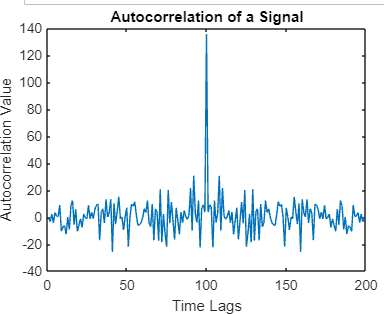
Explanation: We create a random signal of length 100 using randn. The xcorr function computes the signal's autocorrelation. The resulting autocorrelation values are plotted against time lags. Identifying Autocorrelation PeaksIn MATLAB, the findpeaks function is commonly used to locate peaks in the autocorrelation function.
The findpeaks function in MATLAB can assist in this task. Example: Output: 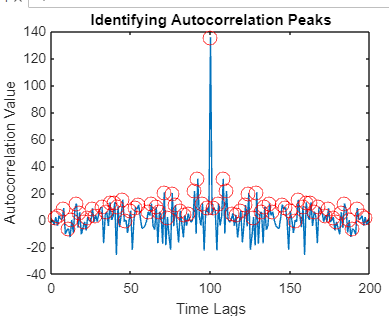
Moreover, visualizing autocorrelation peaks allows for a clear representation of the signal's periodic components.
Explanation: The findpeaks function is used to locate peaks in the autocorrelation function. Peaks are then plotted on the autocorrelation graph, providing a visual representation of significant features. Customizing Autocorrelation PlotsMATLAB allows users to customize autocorrelation plots for enhanced clarity and insight. Customization Parameters: Line Width: Adjusting the line width helps emphasize the autocorrelation curve, making it more prominent and easier to distinguish from other elements in the plot. Color: Choosing an appropriate color scheme enhances the visual appeal and clarity of the plot. MATLAB allows specifying colors using RGB values or predefined color names. Grid Display: Enabling grid lines on the plot provides additional reference points, aiding in the accurate interpretation of autocorrelation values at different time lags. Here's an example of how to customize the plot: Output: 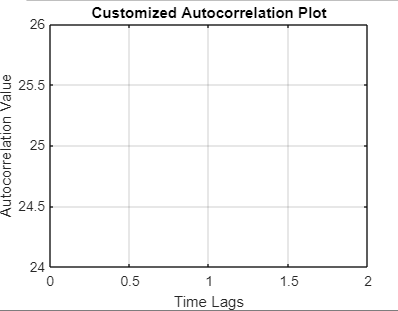
Explanation: The LineWidth and Color options adjust the appearance of the autocorrelation plot. Grid on adds a grid to the plot for better readability. Advanced Autocorrelation TechniquesFor more advanced applications, MATLAB provides additional techniques, such as using window functions or Fourier Transform-based methods. Window Functions for Improved Accuracy
MATLAB provides various window functions, and here we'll demonstrate the use of the Hamming window: Output: 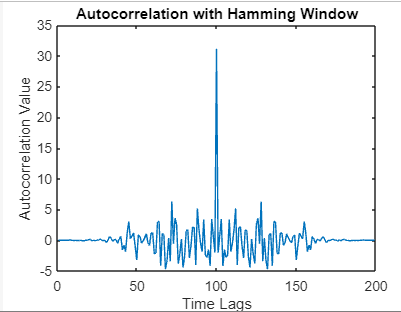
The signal is multiplied element-wise with the Hamming window using. The core function is then applied to the windowed signal, providing a more accurate autocorrelation result. Multivariate Autocorrelation:Extending autocorrelation to multivariate signals allows for analyzing relationships between multiple time-series variables. Multivariate autocorrelation techniques, such as cross-covariance and cross-correlation matrices, enable the examination of interdependencies and lagged relationships between different variables, offering insights into complex systems' dynamics. Example: Output: 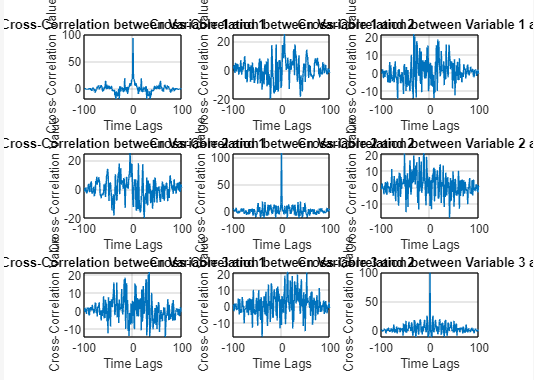
Explanation:
Frequency-Domain Autocorrelation:Transforming signals into the frequency domain via Fourier Transform-based methods provides an alternative approach to autocorrelation analysis.
Example: Output: 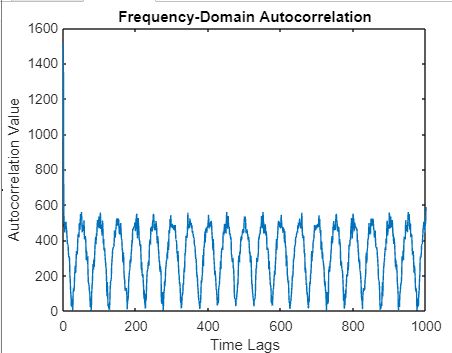
Explanation:
Time-Frequency Autocorrelation:Incorporating time-frequency analysis methods, such as wavelet transforms or spectrograms, allows for examining autocorrelation dynamics across both time and frequency domains.
Example: Output: 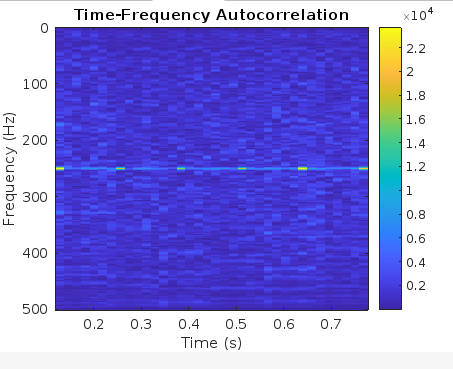
Explanation:
Fourier Transform-based approach:The Fourier Transform provides a powerful tool for analyzing signals in the frequency domain. In the context of autocorrelation, we can leverage the Fourier Transform to compute the autocorrelation function indirectly. Steps for Fourier Transform-based Autocorrelation:Compute the Fourier Transform: Begin by computing the Fourier Transform of the signal of interest. The Fourier Transform decomposes the signal into its frequency components, revealing the signal's spectral content. Compute Power Spectral Density (PSD): Square the magnitude of the Fourier Transform to obtain the Power Spectral Density (PSD). The PSD represents the distribution of signal power across different frequencies. Inverse Fourier Transform (IFT): Take the Inverse Fourier Transform of the squared magnitude to obtain the autocorrelation function in the time domain. This step effectively converts the frequency domain representation back to the time domain. Example:Output: 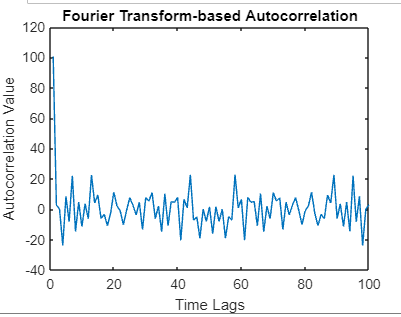
Explanation: The Fourier Transform-based autocorrelation involves taking the inverse Fourier Transform of the squared magnitude of the signal's Fourier Transform. This technique provides an alternative perspective on autocorrelation, useful in certain scenarios.
Next TopicMatlab gca
|
 For Videos Join Our Youtube Channel: Join Now
For Videos Join Our Youtube Channel: Join Now
Feedback
- Send your Feedback to [email protected]
Help Others, Please Share









